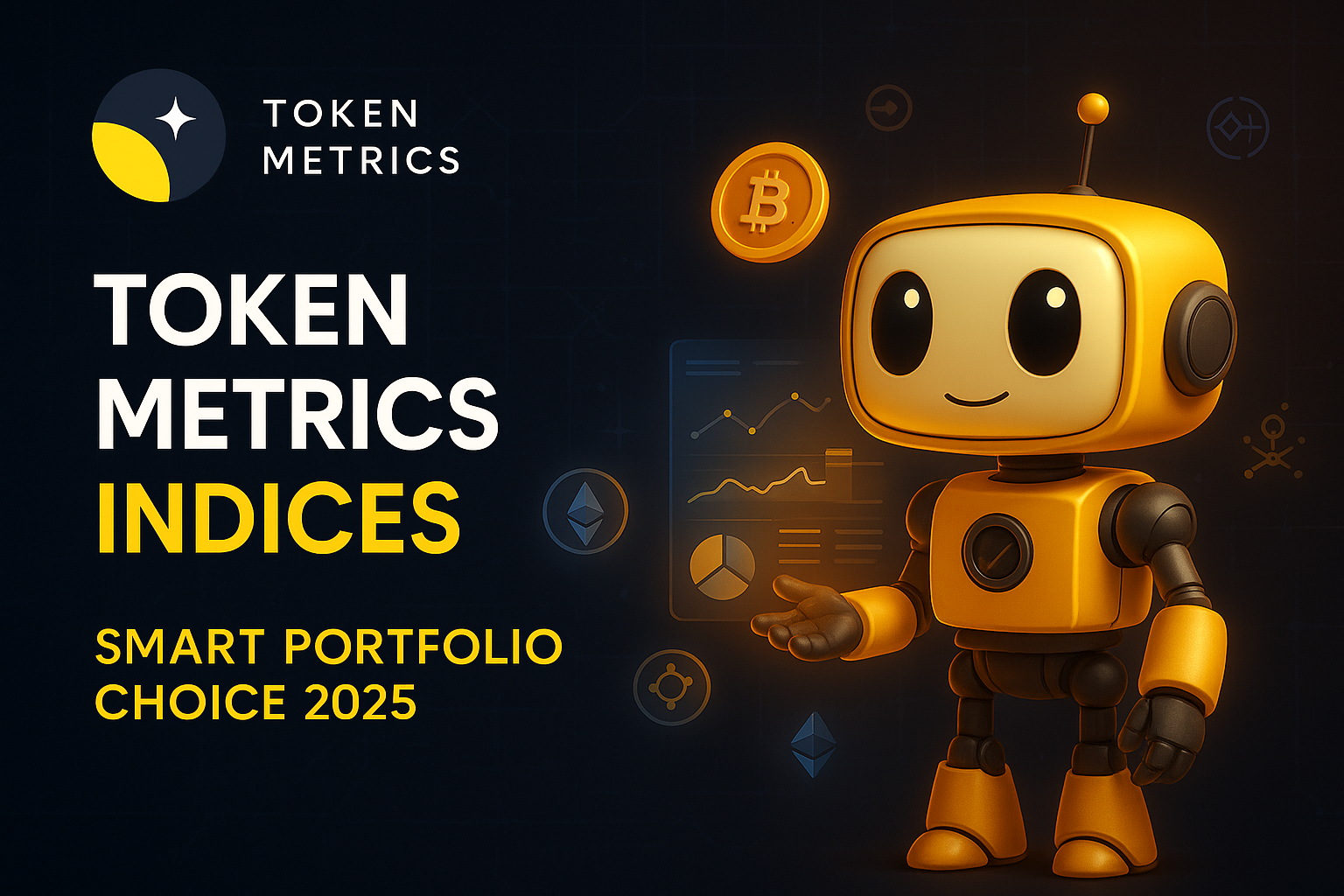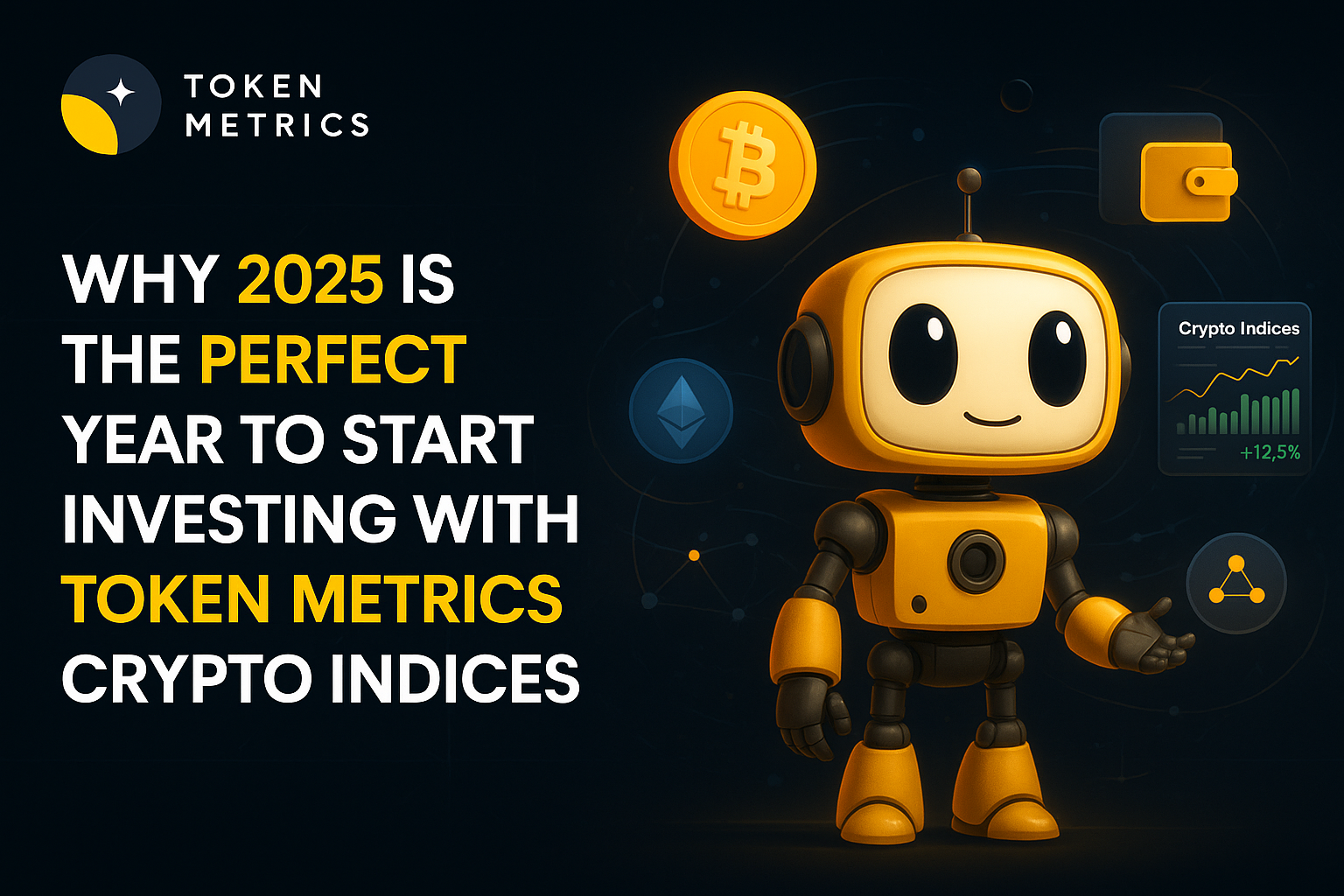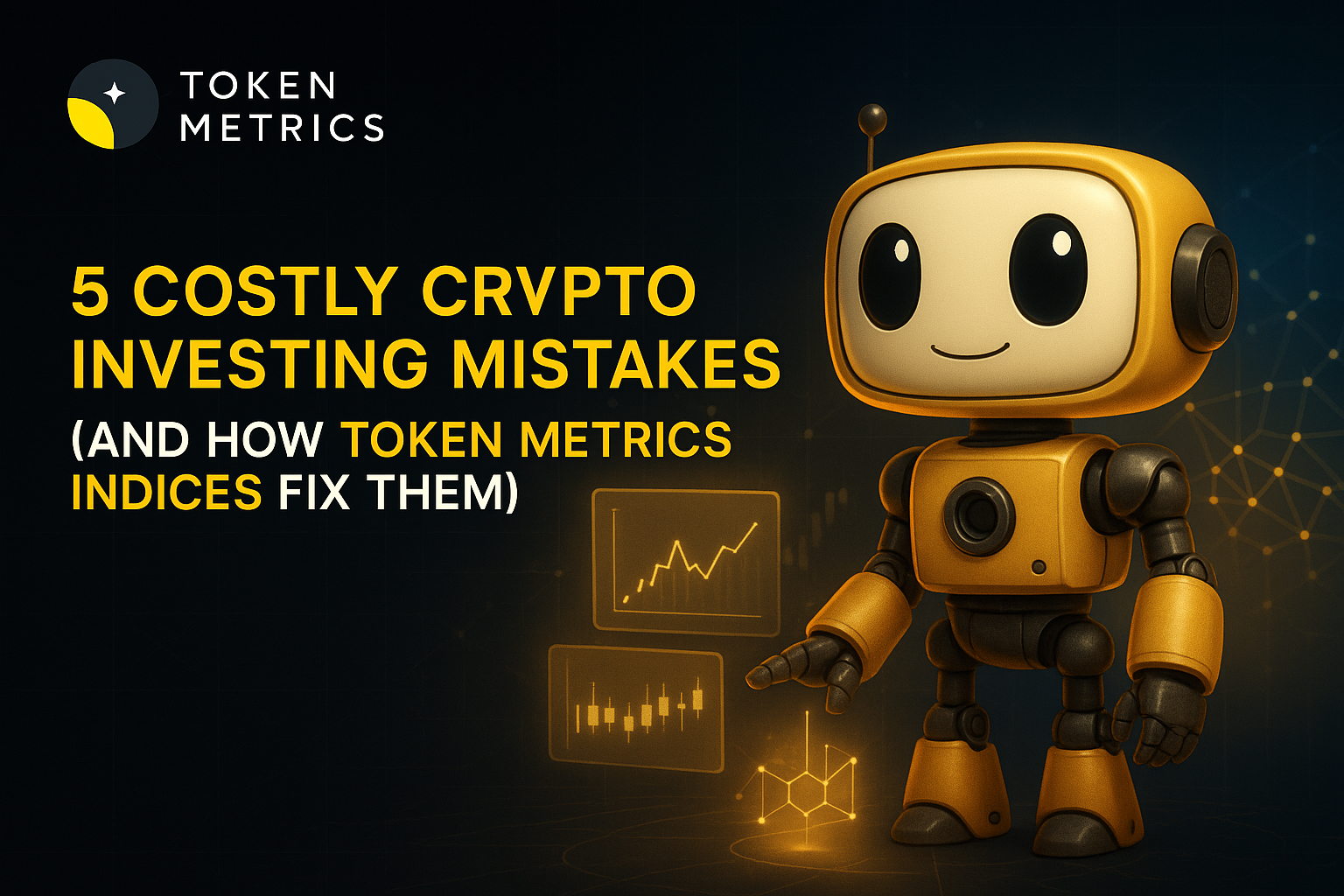
How to Make Money in Crypto? - Unveiling the Secrets to 100x Returns

Click here to buy Cryptocurrencies from Gate.io
The cryptocurrency world has become a dynamic hub of opportunities for savvy investors looking to make substantial profits. With the right strategies and a keen eye for emerging trends, anyone can achieve mind-boggling investment returns.
In this comprehensive guide, we will explore the secrets to making money in crypto and uncover the path to 100x returns.
Who is Ian Balina?
Before we delve into the strategy, it's essential to understand the expertise and know the individual behind it. Ian Balina, the founder and CEO of Token Metrics, is a renowned figure in the crypto world.
With a background in computer engineering and experience as a sales engineer at IBM and a consultant at Deloitte Consulting, Ian brings a unique blend of technical knowledge and business acumen.
He turned $20,000 into over $5 million in less than 12 months using a data-driven approach. With his vast experience and proven track record, Ian's insights into the crypto market are highly sought after.
The 3-Point 100x Strategy
When making 100x returns in the crypto market, Ian Balina has developed a three-point strategy that forms the foundation of his approach. These three points are quality, tokenomics, and valuation.
Quality - The Key to Successful Crypto Investments - Investing in quality crypto assets is crucial for long-term success. By assessing the fundamentals and technology behind a project, you can determine its growth potential. Factors such as on-chain traction, active wallets, community size, and the team's background play a significant role in evaluating the quality of a crypto asset. Additionally, analyzing the code quality, developer activity, and security audits provides insights into the technological aspect of the project.
Tokenomics: Evaluating the Long-Term Value - Understanding the tokenomics of a crypto asset is essential to identify its long-term value. Factors such as supply and demand dynamics, economic incentives, and the token's utility within the ecosystem are crucial in determining whether it's worth holding for the long term.
By assessing the balance between supply and demand and analyzing the market's perception of the asset, you can gauge its growth potential.
Valuation: Identifying Undervalued Gems - Finding undervalued crypto assets is the key to unlocking substantial returns. By comparing the fully diluted valuation (FDV) with the market capitalization, you can identify potential discrepancies.
Additionally, analyzing the asset's valuation compared to its competitors within the sector provides valuable insights into its growth potential. Value investing principles, such as buying low and selling high, form the basis of this valuation strategy.
What is the 100x?
Before we dive deeper into the strategies, let's define what precisely a 100x return means in the crypto world. A 100x return refers to multiplying your investment by 100, resulting in a whopping 10,000% return.
For example, turning $10,000 into $1 million or $1,000 into $100,000 would be considered a 100x return. Achieving such astronomical returns requires identifying crypto assets with tremendous growth potential and investing in them at the right time.
Solana: A 1000x Case Study
To illustrate the potential for 100x returns, let's examine the success story of Solana. Solana, a blockchain platform, delivered over 1000x returns to early venture capital (VC) investors. By analyzing the various funding rounds and the subsequent performance of Solana's token, we can gain insights into the strategies that led to such impressive returns.
Seed Round: Seeding the Path to Success
In March 2018, Solana raised over $3 million in its seed round for 4 cents per token. At this early stage, the project had only released version 0.1 of its whitepaper.
Fast forward to the all-time high of Solana's token, which reached almost $260, and VC investors who participated in the seed round achieved an incredible 6500x return on their investment.
Additional Funding Rounds: Amplifying the Growth
Solana's journey continued with additional funding rounds, each contributing to the project's growth and increasing the potential for substantial returns. In June 2018, Solana raised $12 million at 20 cents per token shortly before launching its private test net.
In July 2019, another funding round resulted in over $5 million raised at 22.5 cents per token, just before the public test net launch. Finally, in February 2020, right before the main net launch, an additional $2.4 million was raised at 25 cents per token.
Matic (Polygon): A Case Study in Launchpad Success
Another avenue to achieve 100x returns in crypto is through launchpads, which provide opportunities for retail investors to participate in early-stage projects.
One such success story is Matic, now known as Polygon, which launched through the Binance Launchpad. By analyzing Matic's journey, we can understand how early investors achieved impressive returns.
Click here to buy Cryptocurrencies from Gate.io
Seed Investor Success: Reaping the Rewards
Seed investors who got in early on Matic received the tokens for 0.0079, which proved to be an incredible bargain. With the all-time high reaching almost 300x the seed price, seed investors who held their tokens experienced a staggering 3700x return. Turning $10,000 into $37 million showcases the potential for substantial gains through early-stage investments.
Retail Investors: Seizing the Opportunity
Retail investors who participated in the Binance Launchpad event for Matic also reaped significant rewards. With a launchpad sale price of 0.00263, retail investors achieved a remarkable 1100x return if they held their tokens until the all-time high.
Even with a modest investment of $300, these retail investors saw their holdings grow to over $300,000, demonstrating the potential for 100x returns through launchpad participation.
How to Make 100x via Mining?
Mining cryptocurrencies can be another avenue to achieve 100x returns. By dedicating computing power to secure blockchain networks, miners are rewarded with newly minted tokens. One project that exemplifies the potential for significant returns through mining is Helium.
Helium: Mining the Path to Profits
Helium is a project that enables individuals to mine tokens by sharing their internet connection through specialized devices called hotspots. By participating in the Helium network, miners earn HNT tokens as a reward.
With the all-time high price of HNT reaching almost $55, early miners experienced a remarkable 500x return on their investment. This showcases the potential for substantial gains through mining endeavors in the crypto market.
How to Make 100x in a Bear Market?
While the crypto market can be volatile, it's still possible to achieve 100x returns even in bearish conditions. One project that exemplifies the potential for significant gains during a bear market is Kaspa.
Kaspa: Profiting in a Downturn
Kaspa is a proof-of-work blockchain project that experienced a 100x return during a bear market. Despite the challenging market conditions, Kaspa's fair launch approach and favorable economics allowed early investors to achieve substantial returns.
With the all-time low price of 0.00017 and the all-time high reaching $0.05, investors who held their positions saw their investments multiply by 100x.
Crypto Quality: Assessing Fundamentals and Technology
When investing in cryptocurrencies, it's crucial to assess the quality of the underlying projects. Evaluating the fundamentals and technology behind a crypto asset provides valuable insights into its potential for growth.
Fundamentals: The Foundation of Success
Examining the fundamentals of a crypto asset involves analyzing factors such as on-chain traction, active wallets, community size, and the team's background. By understanding the project's fundamentals, investors can gain confidence in its long-term viability and growth potential.
Technology: The Backbone of Innovation
The technological aspect of a crypto project is equally important. Assessing factors such as developer activity, security audits, and code quality provides insights into the project's technical robustness. A solid technological foundation indicates the potential for innovation and long-term success.
Crypto Tokenomics: Evaluating Long-Term Value
Understanding the tokenomics of a crypto asset is crucial for identifying its long-term value. By analyzing supply and demand dynamics, economic incentives, and the token's utility within the ecosystem, investors can assess whether the asset is worth holding for the long term.
Supply and Demand Dynamics: Striking a Balance
Analyzing the supply and demand dynamics of a crypto asset is essential to gauge its growth potential.
A balanced supply and demand relationship ensures stability and sustainable value appreciation. Factors such as token issuance mechanisms and token utility within the ecosystem play a significant role in determining the asset's potential.
Economic Incentives: Driving Value Creation
Economic incentives within a crypto ecosystem are vital for driving value creation. By examining factors such as staking rewards, token burns, and revenue-sharing mechanisms, investors can gain insights into the potential for token appreciation. Projects with well-designed economic models attract long-term investors and create a strong foundation for growth.
Crypto Valuation: Finding Undervalued Gems
Identifying undervalued crypto assets is the key to achieving substantial returns. By comparing the fully diluted valuation (FDV) with the market capitalization, investors can identify potential discrepancies in the market's pricing.
Additionally, analyzing the asset's valuation compared to its competitors within the sector provides valuable insights into its growth potential.
Finding the Margin of Safety
Value investing principles can be applied to crypto asset valuation. By identifying assets with a margin of safety, investors can capitalize on market mispricing and achieve significant returns.
Buying assets below their intrinsic value provides a buffer against market fluctuations and sets the stage for substantial gains.
Injective Protocol vs. SEI Network: A Comparative Analysis
To illustrate the importance of valuation, let's compare two projects: Injective Protocol and SEI Network. By analyzing their respective valuations and market positions, we can gain insights into their growth potential.
Injective Protocol: Unleashing the Power of Decentralized Exchanges
Injective Protocol aims to revolutionize the decentralized exchange landscape. With a fully diluted valuation of $1.2 billion and a market capitalization of $400 million, there is room for growth.
Analyzing the project's fundamentals, technology, and competitive landscape provides valuable insights into its potential for value appreciation.
SEI Network: Tapping into the Power of NFTs
SEI Network focuses on the non-fungible token (NFT) space, aiming to bring unique digital assets to the forefront.
With a fully diluted valuation of $200 million and a market capitalization of $100 million, SEI Network is undervalued compared to its competitors. Assessing the project's fundamentals, technology, and market positioning provides valuable insights into its growth potential.
Best 100x Crypto Picks
Based on the strategies outlined and the analysis conducted, I am excited to share my 100x crypto picks. These picks represent projects that exhibit strong fundamentals, promising tokenomics, and the potential for significant valuation growth.
- Solana (SOL): With its impressive track record of delivering 1000x returns to early VC investors, Solana remains a top contender for substantial gains.
- Polygon (MATIC): Formerly known as Matic, Polygon achieved remarkable returns through its launchpad event on Binance. Retail investors who participated in the event experienced 1000x returns.
- Helium (HNT): By participating in the Helium network and mining HNT tokens, early miners achieved impressive returns of 500x.
- Kaspa (KAS): Despite a bearish market, Kaspa demonstrated the potential for 100x returns through its fair launch approach.
Conclusion
Making money in the crypto market requires strategic thinking, thorough analysis, and a willingness to take calculated risks. By focusing on quality projects, evaluating tokenomics, and identifying undervalued assets, investors can position themselves for substantial gains.
However, it's essential to conduct thorough due diligence and stay informed about market trends and developments. With the knowledge and strategies outlined in this guide, you are well-equipped to navigate the crypto market and unlock the potential for 100x returns.
Disclaimer
The information provided on this website does not constitute investment advice, financial advice, trading advice, or any other advice, and you should not treat any of the website's content as such.
Token Metrics does not recommend that any cryptocurrency should be bought, sold, or held by you. Conduct your due diligence and consult your financial advisor before making investment decisions.
Click here to buy Cryptocurrencies from Gate.io

.svg)

Create Your Free Token Metrics Account

.png)




%201.svg)
%201.svg)


%201.svg)









.svg)




.png)